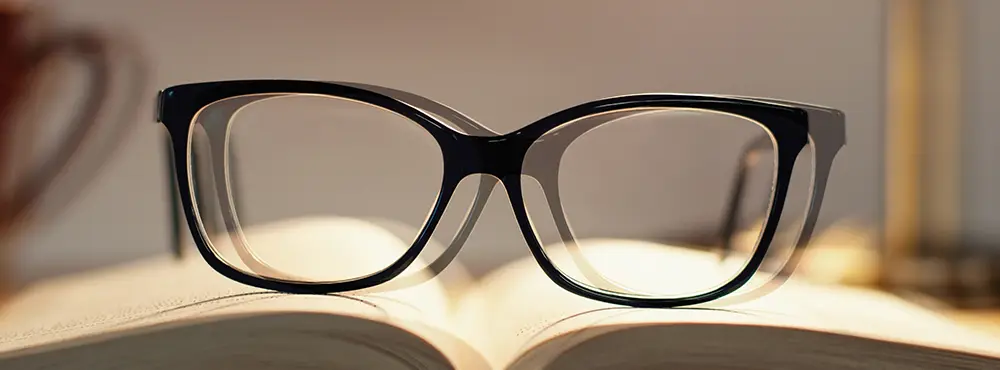What is double vision (diplopia)?
Medically referred to as diplopia, double vision is seeing double images of a single object. The images may be side by side, on top of one another, or a mixture of both. On some occasions, you may even see more than two images of the same object.
Depending on the cause, double vision can either be a temporary issue or a long-term condition. Seeing in double vision may cause you to become anxious, dizzy, disoriented and confused..
What causes double vision?
We often take for granted the complex process that occurs for our eyes to be able to function smoothly together. Our perception of double vision can be related to one eye’s inability to process an image properly (monocular diplopia) or both where eyes are pointing in different directions (binocular diplopia).
Temporary moments of binocular double vision can be caused by a dissociation of eye movement function caused, for example, by drinking too much alcohol or a blow to the head. Insufficient oxygen supply to a nerve can cause its function to be impaired.
The appearance of eyes pointing in different directions is known as a squint (strabismus is the medical term). As well as being caused by a new onset weakness leading to double vision, it may also occur if one eye is weaker, i.e. develops as a ‘lazy eye’, and has a tendency to be ignored. In this case the weaker eye has a tendency to drift in or out.
Causes of new onset binocular double vision
Cranial nerve palsies
The interruption of the function of the nerves that supply the muscles that move the eyes to work together causes double vision. These can both be a result of many different causes:
- A lack of oxygen / ischaemia caused by a lack of blood supply (risk factors include a past history of smoking, high blood pressure, high cholesterol, diabetes and a family history of vascular problems such as heart attack or stroke.
- Inflammation of the nerves for example multiple sclerosis or rare infections. Meningitis. Inflammation or swelling of the muscles (e.g. thyroid eye disease)
- Trauma through head injury
- Rarely, a space occupying tumour or aneurysm
A doctor will usually look at each underlying issue and look at ways of dealing with the condition upon diagnosis.
Graves disease
Graves disease is a situation where your immune system makes a mistake and releases antibodies that stimulate thyroid receptors, causing an overactive thyroid gland, and swelling of the eye muscles.
Orbital infections
Infections of the eyelid or sinuses can sometimes spread around the eye (orbital cellulitis). In this situation the eye is painful, and if double vision is present, can signify the infection has caused displacement of the eye or restriction of eye movements. Prompt systemic antibiotics are required. Sometimes surgical drainage is also required.
Causes of monocular double vision
Monocular double vision is double vision in one eye and is a less common condition.
Abnormalities
Abnormalities of the retina due to macular degeneration are a common cause. The eye’s lens changing shape with progression of cataracts, can also cause double vision.
Dry eyes
Dry eyes, particularly more severe conditions such as Sjogren’s syndrome, can cause ghost images. Eye drops can help this by reintroducing moisture into the eyes if they are not producing enough tears.
Corneal irregularities
Usually caused by astigmatism, the irregular shape of the cornea affects how light passes through the eye, resulting in images appearing blurry. People with minor astigmatism may not even notice a blurriness in their vision, whereas people with more pronounced astigmatism will need corrective lenses.
Swelling in the eyelid
Eyelid swelling may signify infection. In serious infections this can spread to around the eye and cause displacement of the eye or restriction of movement leading to double vision.
Does double vision go away?
In some cases, double vision can go away on its own; however, if it stays with you for more than a couple of hours, you should contact your doctor immediately.
How is double vision treated?
As most double vision is the result of underlying issues, treatment is for the underlying cause.
Treatments for monocular double vision
Double vision caused by dry eyes can be treated by regularly using eye drops. You can purchase standard eye drops such as Blink Intensive Care eye drops from our site. More intense dry eye may require eye drops prescribed by an optician or GP.
Double vision caused by corneal irregularities (usually as a result of astigmatism) requires a corrective lens to treat. A corrective lens can be either prescription glasses or toric contact lenses.
If swelling of the macular is the cause of the double vision, then this requires specialist treatment, and may require injections into the eye to “dry up” the swelling and help the retina return to its previous shape.
Double vision caused by abnormalities such as cataracts may result in double vision immediately after cataracts surgery but usually clears up quickly.
Treatments for binocular double vision
There are various treatments for binocular double vision, depending on what's causing it. These include:
- Prisms inserted into glasses to help bend light so that images fall on the same part of each eye’s retina
- Eye exercises-this can help if strained or weakened muscles cause your double vision. By strengthening the eye muscles with eye exercises, your double vision should resolve
- Wearing an eye patch-this can be used as a short-term solution before a permanent solution
- Contact lenses or glasses-they can help to adjust your sight and correct the problem
- Surgery-this can correct the positioning of the eye's muscles
- Botox injections-injecting the eye muscles with botulinum toxin can help to correct double vision by re-balancing the muscles of the eyes
- Eye surgery where the weakened muscles are positioned in a more effective position, or overacting muscles in a less effective position.
Diagnosing diplopia
Your doctor will note down your symptoms and look for other problems affecting vision by carrying out some tests. Determining whether you have binocular or monocular double vision is pretty simple; however, finding the cause is usually more complicated and may require various tests.
A physical exam might involve:
- Blood tests
- A dilated eye exam
- Eye movement tests
- Blood sugar tests
- A CT scan or MRI
As with all other medical conditions, it is essential to inform the DVLA if you regularly suffer from diplopia. Failure to disclose diplopia or any other medical condition could result in a £1000 fine or prosecution if you were to be involved in an accident. You can report diplopia [1] to the DVLA by clicking here.
Sources
[1] GOV.UK. (2019). Diplopia (double vision) and driving. [online] Available at: https://www.gov.uk/diplopia-and-driving [Accessed 21 May 2019]
Quick links:
Do I need an eye test?
A guide to light sensitivity
A guide to cataracts
Disclaimer: The advice in this article is for informational purposes only and does not replace medical care or an in-person check-up. Please check with an eyecare professional before purchasing any products or remedies. For information on our article review process, please refer to our Editorial Policy.

 Offers
Offers Account
Account
 Favorite
Favorite
 Basket
Basket

 OFFERS
OFFERS
















